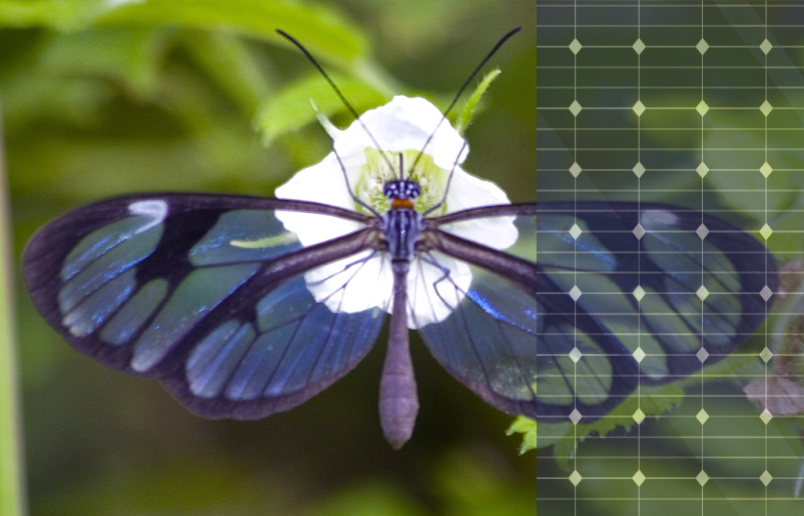
Could you introduce yourself?
I’m Emilie Snell-Rood, Associate Professor at the University of Minnesota in the College of Biological Sciences and the Department of Ecology, Evolution, and Behavior. I'm broadly interested in how organisms deal with changing environments and what that means for conservation. In parallel, I’m interested in how the human-built environment and changes to the built environment can benefit biodiversity, and also how humans can learn from biodiversity in their own applications. The Templeton project fits within the last of those, which is thinking about how humans can get inspiration from biology and biodiversity in their own designs and applications.
What is the goal of your project “‘Function’ in biology and bio-inspired design”?|
We have a bunch of goals. One goal is to publish a series of modules that people can use in classes to get the basics of biology for bio-inspired design. Another bigger goal is having a group of biologists, philosophers, historians, architects and engineers work together to come up with a couple of synthesis papers.
How did you learn about bio-inspired design?
I first learned about it from a book that I read in 2011. It was a book on biological toxins called “Slow Death by Rubber Duck”, which is a really good book in general. But I learned about bio-inspired design in that book and I started learning more about it because I thought it was really an intriguing idea. I decided to give some talks on that concept to non-biologists and it seemed to be an easy way to get people hooked into biology quickly. So it very much started with an interest in education and connecting people outside of biology to biology. I loved how it inherently got people from very distant fields to work together on common problems.
Shortly afterwards, I designed a freshman seminar and then an honors seminar on bio-inspired design. In designing these classes, I learned that a lot of the fields doing bio-inspired design don't necessarily involve biologists. I thought that was a really limiting factor - that bio-inspired design would probably be much better if there was more active collaboration with biologists. I started to write a book that was meant to be biology for bio-inspired design. That ended up morphing into a series of papers, and eventually grew into this Templeton grant.
How would you describe the workflow of a bio-inspired design project?
For people coming at it from a design perspective, we usually take a top down approach where you're starting with a problem. After starting with a problem analysis, you try to distill that to a list of “functions.” In other words, what are some action words related to the problem that you're trying to solve? You can use this list to brainstorm biological models that do similar things. You can either do that just by drawing on your own biological knowledge or you can go to databases like AskNature and put those functions in - like “how does nature crush?”, or “how does nature repel water?” And it will give you a whole bunch of organisms back and you can use that to explore which ones match your problem.
Once you choose a biological model, you generally try to learn more about how that trait works in that organism. And use that to get ideas about how you can improve your own design, whether that's copying the nanostructure or the chemistry of that biological trait or maybe at the macro level, how different parts of an organism work together physically. Then you kind of abstract your biological trait back to your design, make some changes to your design, build a prototype, and test it. Often, there are multiple iterative rounds of the process.
Could you give a few examples of bio-inspired design?
One of the oldest ones is velcro, which was originally based on a burr in dog fur. Dry adhesion in gecko feet is another area where people are trying to make adhesives that are not sticky or that are adaptive and can move over other surfaces.There are also a lot having to do with light reflection and the nanostructure of insect parts. There has been an LED flashlight that was improved based on the nano structure inside of a firefly cuticle. They basically copied that in the flashlight design to make it more reflective and brighter. And so all of those examples, what they're doing is trying to figure out a match between the function in the design, the function in the application and what are sort of analogous functions that have evolved in biological traits.
What are you currently working on?
The paper we're currently working on is about biology-based frameworks. There are a bunch of existing biology-based frameworks that people use in design and they're loosely based on biology, but they're not necessarily accurate in terms of the biological principles that they're trying to capture. So we're working together to revise biology frameworks for design that are both accurate in terms of biology, but also also useful for designers.
We’re also designing a couple of workshops with architects so that they can know how to take a bio-inspired design approach to their own problems. That's how we're trying to apply what we develop to people in their own research and design practice.
Lightly edited for clarity
Image is collage of two images:
- Greta Oto Glass-winged Butterfly at Juréia-Itatins Ecological Station State of São Paulo. Photo by Ithaka Darin Pappas under License CC BY-SA 4.0
- Solar Panel vector by Vecteezy
